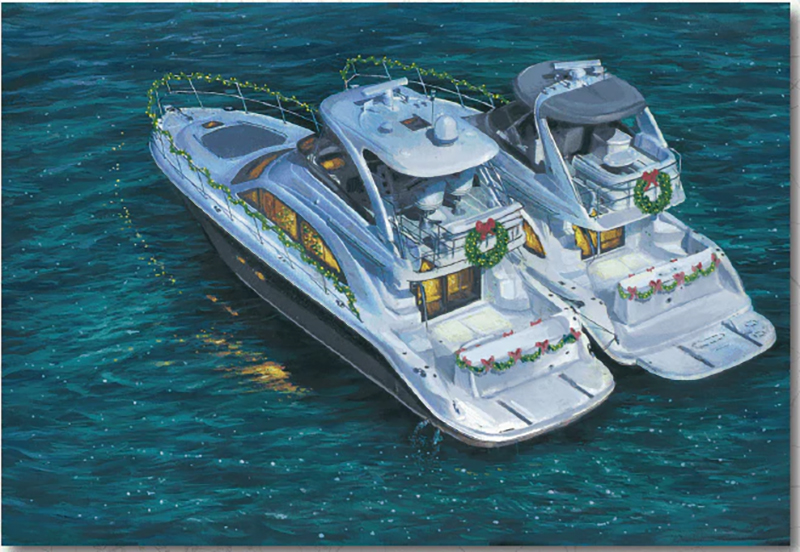SAN DIEGO — The pier adjacent to Seaport Village in Downtown San Diego is often crowded each Saturday morning. Seafood lovers arrive at the pier to greet a handful of commercial fishermen, who spent the preceding few hours catching tuna and other fish species off the San Diego coast, bringing them back to shore to sell to consumers.
Those consumers come to the Tuna Harbor Dockside Market every Saturday morning at 8 a.m., in hopes of finding – and buying – the freshest of catches. Purchases made that morning more than likely turns into lunch or dinner later in the day.
The Tuna Harbor Dockside Market – an open-air seafood market spearheaded by the Port of San Diego – is a microcosm and reminder of what once existed in San Diego. Southern California’s southernmost metropolis was once home to a thriving tuna fishery.
Founding of the American Tuna Fishery
San Diego is often credited with birthing the American tuna fishery. The industry traces back to 1903, when a sardine packer in San Pedro switched to canning of albacore.
“Consumers’ acceptance of canned tuna soon led to the development of fishing fleets in both San Diego and San Pedro,” a research paper published by the National Marine Fisheries Service (NMFS) in July 1978 stated. “San Diego became the major base for the fleet, a position it continues to hold [through 1978].”
The first cannery opened its doors in 1909; the first tuna cannery arrived two years later.
“In the ensuing half-century, the city would earn its title as the ‘Tuna Capital of the World.’ By the 1960s, San Diego’s third-largest industry would be tuna, preceded only by the Navy and aerospace,” a blog post on the San Diego Food System Alliance website stated. “Catching, canning, and marketing of tuna would employ up to 40,000 San Diegans.”
A high demand of canned albacore on the East Coast fostered the growth of the tuna fishery in San Diego, The Journal of San Diego History stated in a published report, “The Origins of California’s High-Seas Tuna Fleet.”
Japanese and Portuguese Influence
The tuna fishery’s establishment and expansion in San Diego coincided with an influx of Japanese and Portuguese immigration to the area. Fishermen from both immigrant groups were instrumental in developing fishing techniques that defined an entire industry.
“San Diego’s first cannery, the Pacific Tuna Canning Company, became the second operational tuna cannery in Southern California,” the research paper, authored by August Felando and Harold Medina stated. “The San Diego-based cannery obtained its albacore supply from small fishing boats manned by Japanese and Portuguese immigrants who caught the tuna by trolling with artificial lures, fishing with baited hand-line gear, and utilizing the bamboo pole method.”
Felando and Medina added Japanese immigrants – not just in terms of fishing techniques but also with sheer numbers – heavily influenced the commercial tuna market.
“In 1913, the Japanese immigrant fishermen incorporated themselves into the Japanese Fishermen’s Association of San Diego. The Japanese influence in San Diego kept growing so that by 1918, Japanese immigrants owned or operated more than 45 fishing vessels in San Diego, while more than 200 fishermen were members of the Japanese Fishermen’s Association,” Felando and Medina stated in their report.
Post-World War I Era
San Diego’s commercial fishing industry performed well during The Great War. The end of World War I in 1918, however, caused the industry to slow down significantly. Tuna canneries shut down permanently, merged together or allowed themselves to be acquired by 1922, according to Felando and Medina.
The economic downturn after World War I caused many Japanese fishermen to head south of the border and pursue opportunities in Mexico.
“A large portion of the history of Japanese involvement in the tuna industry, especially in Baja California, revolved around Kondo Masaharu,” Felando and Medina stated. “With financial backing from Japanese investors and fishing concessions acquired from the Mexican government, Kondo’s new company employed 70 Japanese tuna fishermen to operate four fishing vessels.
“Turtle Bay was selected as a base of operation because its natural harbor catered to tenders from San Diego and because the site had tuna fishing grounds that were productive after the end of the albacore/ bluefin seasons of Southern California,” Felando and Medina continued in their research paper.
San Diego’s commercial fishing industry, meanwhile, continued to experience its ups and downs through the Great Depression and World War II.
Modernization and Industry Peak
Bait boats were mostly used until the late 1950s, when fishing vessels switched from hook-and-line fishing to mechanized purse seining.
“In 1969, the realization of huge profits to be made in tuna fishing led to rapid expansion of the fleet. Not only were many new vessels constructed, but the boats were larger and faster than their predecessors,” Steve Rockland stated in his 1978 NMFS-published report, “The San Diego Tuna Industry and its Employment Impact on the Local Economy.”
“Whereas in 1969, the San Diego tuna fleet had a total fishhold capacity of
31,750 tons, by 1974 this figure had grown to 52,840 tons,” Rockland continued.
Rockland added most of the tuna reeled in by the San Diego fleet were either skipjack or yellowfin.
“Skipjack tuna caught in these waters usually range between 4 and 7 pounds and are the least valuable of the tunas,” Rockland said. “This is because their small size makes them more costly for the canneries to process, resulting in the lowest yield of canned product per ton of raw fish. The yellowfin tuna normally accounts for the greatest tonnage. Valuewise, the yellowfin tuna ranks second to albacore in per unit value.”
Tuna Industry Today
A “kill quota” implemented in 1975 substantially harmed San Diego’s fishing fleet. Boats were required to limit their bycatch, ultimately causing Bumble Bee Seafoods and Van Camp Seafood Cannery to close its doors in the early 1980s.
The San Diego fleet today consists of about 130 active vessels, according to the San Diego Food System Alliance. Legislation passed in 2015 created the “Pacific to Plate” initiative, a plan where commercial fishermen can sell their catches directly to consumers. The public policy opened the door for San Diego’s Tuna Harbor Dockside Market, where fishermen and consumers meet each Saturday, between 8 a.m. and 1 p.m.
The open-air seafood market sells more than just tuna. Black cod, for example, is available year-round.
Also sold at the market, according to an April 7 report, were box crab, live octopus, halibut, whole mahi mahi, ahi loin, wahoo filet, boat-frozen squid and opah filet. Prices ranged from $3.50 to $25 per pound.
Legislators hope the “Pacific to Plate” initiative will help revive San Diego’s commercial fishery. Be sure to visit the Tuna Harbor Dockside Market at Seaport Village, if you have plans to dock along the Downtown San Diego waterfront on a Saturday morning.
More information is available online at thdocksidemarket.com.






4 Responses
Olsen’s Ship Chandlers along with Olsen’s Tackle supported all if not most of the tackle industry at that time and have incredible stories. They are still there as residents – great people!!!
Let’s not forget the fleet of smaller vessels (25 to 70 ft) that were operated by Sicilian families living in Little Italy. The vessels were found at the finger piers at Grape and Hawthorne Streets on Harbor Dr. The boats supplied market fish ( Halibut, Sea Bass, Albacore, and bottom fish) for the community at large. Their history should be part of our waterfrony heritage.
The Tuna Market is absolutely disgusting. The fish are suffocating on cold ice and sold still alive. This WET MARKET needs to be shutdown immediately.
TY here are a few species of Crustaceans, sold live , the majority is fresh caught on ice, not frozen. They’re not suffocating, they’re not alive!